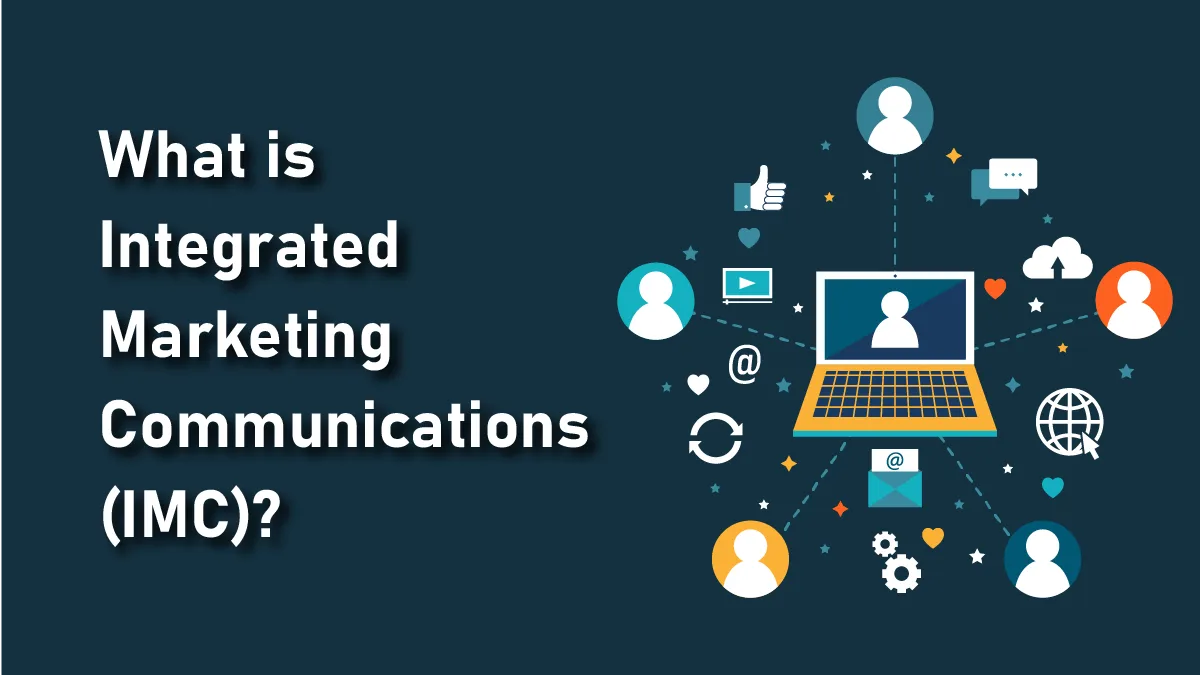What is Integrated Marketing Communications (IMC)?

Integrated Marketing Communications (IMC) is a strategic approach that combines various marketing channels and communication methods to create a cohesive and consistent brand message. It aims to enhance brand recognition and consumer engagement across all touchpoints. IMC integrates various marketing efforts to ensure that all communications support and reinforce the same messages about the organization, its products, and services. This approach allows organizations to deliver an engaging and seamless consumer experience while optimizing their image and relationships with stakeholders.
IMC vs Traditional Marketing
Traditional marketing focuses on individual channels, such as print advertisements and television commercials. In contrast, IMC adopts a more comprehensive approach to marketing communications.
One key difference is in their approach: IMC is coordinated and holistic, while traditional marketing is often limited to specific channels. This affects message consistency. IMC keeps messages uniform across all platforms, whereas traditional marketing can have mixed messages. In terms of consumer engagement, IMC aims to build long-term relationships with customers, while traditional marketing is more about making sales. IMC also makes better use of data, using analytics for real-time insights, while traditional marketing often relies on less data. Lastly, IMC is flexible, allowing brands to quickly adapt to market changes, while traditional marketing tends to be more rigid.
Overall, integrated marketing communications helps brands connect with consumers more effectively by ensuring that every interaction sends the same clear message.
Key Elements of IMC
IMC is built on five key elements that work together to create a cohesive marketing strategy.
Advertising: This medium establishes brand visibility through various channels like print, TV, and digital platforms, effectively communicating the brand’s message.
Personal Selling: Direct interaction between sales representatives and customers allows for personalized communication, helping to build relationships and meet specific needs.
Sales Promotions: Short-term incentives, such as discounts and contests, encourage immediate purchases and attract consumer attention.
Direct Marketing: This approach targets specific audiences through methods like email campaigns and direct mail, fostering a personal connection and driving responses.
Public Relations (PR): PR manages the brand’s image and builds relationships with the public, enhancing credibility and trust.
Each element plays a vital role in delivering a unified message that resonates with the target audience across multiple channels. By focusing on these key elements, brands can create a cohesive and effective IMC strategy that strengthens their connection with consumers.
Also Read: Gemini 2.0: Google’s Bold Leap into the Future of Autonomous AI
Benefits of IMC
Implementing an IMC strategy brings several significant advantages to organizations.
First, it enhances brand loyalty, as consistent messaging builds trust with consumers and encourages repeat business and advocacy. Second, IMC improves resource allocation. Businesses can reduce redundancy and optimize their resources for greater campaign effectiveness by coordinating marketing efforts.
Additionally, a well-executed IMC strategy can lead to increased ROI, ensuring that marketing initiatives work together synergistically rather than in isolation. IMC also offers greater flexibility, enabling brands to adapt quickly to market changes through the use of real-time data for decision-making.
Finally, organizations that effectively integrate their marketing communications can differentiate themselves in crowded marketplaces by providing seamless customer experiences.
A Step-by-Step Guide to IMC Framework and Planning
Developing an effective integrated marketing communications strategy involves several crucial steps.
- Situation Analysis: Start by evaluating your strengths and weaknesses, as well as external opportunities and threats. Use a SWOT analysis to understand the market landscape.
- Defining Objectives: Set clear, measurable communication goals that align with your overall business objectives. This helps you track progress and success.
- Identifying Target Audience: Segment your audience based on characteristics like demographics and behaviors. Knowing your target audience is essential for tailoring messages.
- Creating Key Messages: Develop clear and concise messages that resonate with your target segments and reinforce your brand identity.
- Choosing Communication Channels: Select the right channels for delivering your messages based on where your audience prefers to engage, such as social media, email, or print.
- Implementation: Execute your plan while ensuring all teams are on the same page regarding messaging and goals. Coordination is key for a consistent brand image.
- Evaluation and Adjustment: Monitor performance metrics to see how effective your IMC strategy is. Use feedback to make adjustments for future campaigns.
By following these steps, organizations can create a robust IMC framework that enhances brand consistency and improves overall marketing effectiveness.
Role of IMC in Brand Consistency
Brand consistency is vital for building consumer trust and loyalty. Integrated marketing communications plays a crucial role in achieving this by ensuring that all communications—whether through social media, email marketing, or advertising—convey a unified message that reflects the brand’s core values and identity. This helps consumers feel more confident in their purchasing decisions, knowing they can expect the same quality and experience regardless of how they interact with the brand.
Examples of Successful IMC Strategies
Several brands have successfully implemented IMC strategies that exemplify best practices.
Coca-Cola’s “Share a Coke” Campaign: Coca-Cola replaced its iconic logo with popular names on bottles. This campaign utilized social media, traditional advertising, and in-store promotions to create a personal connection with consumers while maintaining brand identity.
Nike’s “Just Do It” Campaign: Nike consistently uses its slogan across various platforms—from television commercials to social media posts—creating a powerful brand association with motivation and athleticism.
Apple’s Product Launches: Apple integrates its product announcements through live events streamed online, supported by social media buzz and follow-up advertising campaigns, ensuring a cohesive message about innovation.
Conclusion
Integrated marketing communications represents a crucial shift in how brands communicate with their audiences. By unifying various marketing channels, organizations can enhance brand consistency, foster consumer loyalty, and boost marketing effectiveness. As markets evolve with technological advancements, adopting an IMC approach becomes essential for success. IMC simplifies communication and strengthens marketing impact by ensuring that all communication channels convey the same core message. For brands aiming to connect deeply with customers, embracing IMC is vital for navigating today’s complex marketing landscape.

